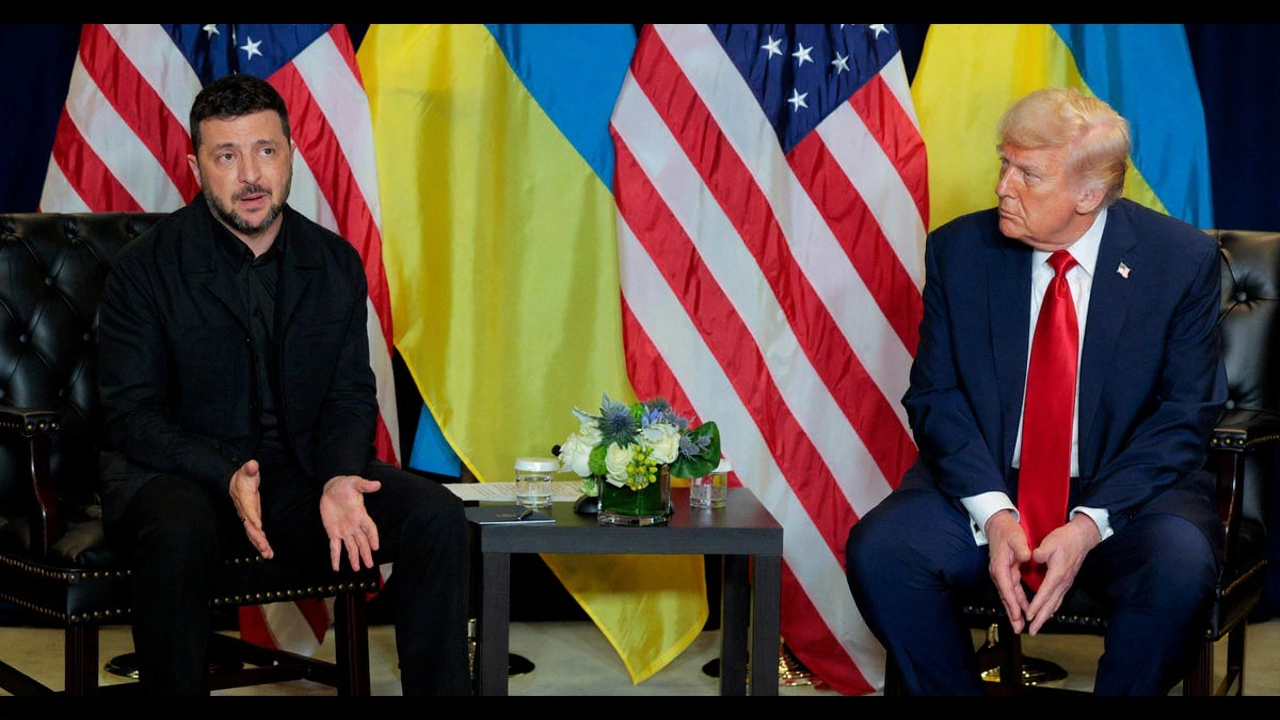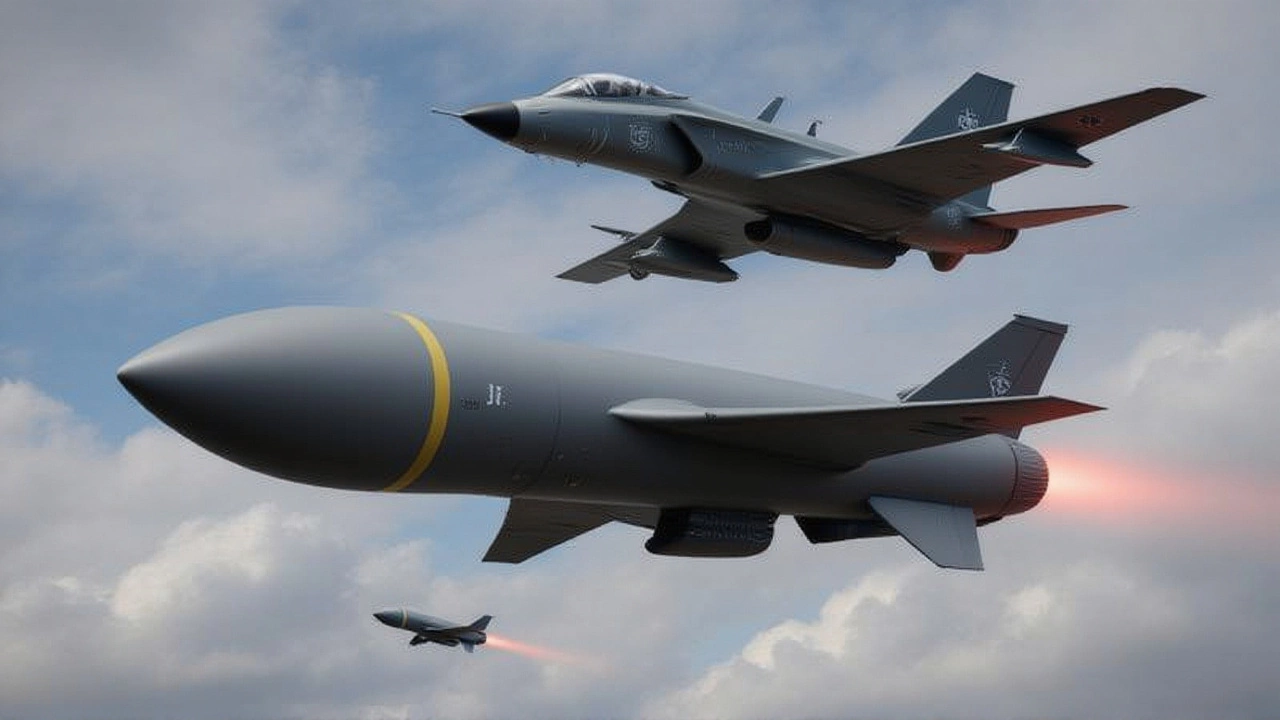When Volodymyr Zelensky, President of Ukraine asked Donald Trump, President of the United States for long‑range Tomahawk cruise missiles on the sidelines of the United Nations General AssemblyNew York City, Washington officials confirmed on September 28, 2025 that they are reviewing the request. The move could let Kyiv strike targets up to 1,700 km deep inside Russia, potentially reaching the Kremlin, and it puts the final go‑ahead squarely on JD Vance, Vice President of the United States, who told reporters the decision “will be made in the best interest of the United States.”
Why the Tomahawk Matters
The BGM‑109 Tomahawk, first deployed in the 1980s and famously used during Operation Desert Storm in 1991, remains the cornerstone of America’s long‑range strike capability. Each missile costs roughly $2 million and is built by Raytheon. Modern Block V variants can travel 1,600‑2,500 km, fly low to the ground, and even loiter over a target before striking. Defense analyst Borsari notes that the missile’s guidance suite blends GPS, inertial navigation, and terrain‑contour matching, delivering a circular error probable of about 30 meters – essentially “pinpoint” for a weapon of its size.
Ukraine’s Strategic Calculus
In recent months, Kyiv’s armed forces have been wrestling with a stark dilemma: they can blunt Russian artillery and drone attacks near the front, but they lack the ability to hit the deep‑strike assets that keep Russia’s war machine humming. “If we can target bomber bases in the Russian rear, we force Moscow to rethink its air‑defence allocations,” Zelensky reportedly told Trump during a private UNGA side meeting. The request is not just about terrorizing the Kremlin; it’s about crippling logistics hubs, energy pipelines, and command‑and‑control nodes that sit outside the fiercest fighting.
Washington’s Internal Debate
Inside the White House, the discussion is anything but straightforward. On one side, Pentagon officials argue that Tomahawks would give Ukraine a “strategic depth” tool, potentially shortening the conflict. On the other, State Department diplomats warn that handing over such a potent system could trigger a dangerous escalation, especially if Russia decides to retaliate with its own long‑range weapons.
“We have to weigh the immediate benefit to Kyiv against the long‑term risk of a wider arms race,” said a senior adviser, who asked to remain anonymous. Vice President Vance, when asked by Fox News on Sunday, replied, “It’s something the President is going to make the final determination on. What the President is going to do is what's in the best interest of the United States of America.”
Potential Military Impact
If Kyiv receives even a modest batch of Tomahawks – say, 30 missiles – the strike envelope expands dramatically. With a 1,700 km range, the missiles could be launched from western Ukraine and still reach Moscow, St. Petersburg, or the Kaliningrad enclave. That reaches deep into Russian territory where air‑defences are thinner, and where critical infrastructure like the Engels bomber base sits.
- Cost per missile: roughly $2 million – a price Ukraine could likely cover with Western aid.
- Operational range: 1,600‑2,500 km, but likely capped at 1,700 km for export.
- Payload: up to 450 kg of multi‑effects conventional warhead, enough to disable air‑field runways.
- Accuracy: <30 m CEP, making it viable for high‑value targets.
Borsari explains that the missile’s ability to be re‑programmed mid‑flight could let Kyiv adjust targets in real‑time, a capability that “turns a static battlefield into a moving chessboard.”
Political Repercussions
The decision sits at the crossroads of U.S. domestic politics and global strategy. President Trump, whose public statements have swung from “hands‑off” to “the Russian bullhead is getting punched,” appears increasingly frustrated with Vladimir Putin’s intransigence. "He’s ignoring my offers to end this war," Trump allegedly told an aide, according to a source familiar with the conversation. If Trump green‑lights the transfer, it would mark a sharp departure from the policy of limiting long‑range arms to Ukraine, a stance adhered to by previous administrations.
Meanwhile, Moscow’s reaction could be swift. Vladimir Putin, President of Russia has already warned that “any escalation will be met with decisive counter‑measures.” Analysts in Moscow predict that a Tomahawk strike on a Russian air‑base could trigger a retaliatory strike on European NATO assets, potentially pulling the alliance into a broader conflict.
What Comes Next?
For now, the ball is in Trump’s court. A formal decision could arrive as early as next week, according to sources close to the Oval Office. Should the transfer be approved, the logistics of training Ukrainian crews, integrating the missiles onto existing launch platforms, and establishing secure supply lines will take months.
Regardless of the outcome, the very fact that the United States is openly entertaining the idea signals a shift in how Washington views Ukraine’s war‑fighting needs – from short‑range artillery to strategic, deep‑strike capability. Whether that shift will tip the balance in Kyiv’s favour, or ignite a new round of Cold‑War‑style brinkmanship, remains the big unanswered question.

Frequently Asked Questions
How could Tomahawk missiles change Ukraine's military strategy?
The missiles would let Kyiv strike high‑value Russian assets up to 1,700 km away, such as bomber bases, power plants and command centres. That reach forces Russia to disperse its assets and stretch its air‑defence network, potentially reducing the intensity of Russian attacks on the front lines.
What are the costs and logistical challenges of providing Tomahawks?
Each missile runs about $2 million, meaning a modest batch would cost tens of millions – a sum that could be covered by existing U.S. security aid packages. However, Ukrainian crews need training on launch platforms, and the missiles must be integrated with NATO‑standard command networks, a process that could take several months.
What might Russia do if the missiles are deployed?
Moscow has warned of “decisive counter‑measures.” Analysts expect a possible increase in Russian air‑defences around rear‑area installations, heightened cyber activity against NATO, and perhaps limited strikes against Western assets in Eastern Europe as a deterrent.
How does this request fit into broader U.S. policy on Ukraine?
Historically, the United States has supplied short‑range artillery, air‑defence systems and drones. The Tomahawk request marks a potential escalation to strategic weapons, reflecting a growing U.S. willingness to help Kyiv hit deeper Russian targets, especially as the conflict drags on.
When is a decision expected?
Sources close to the White House say President Trump could sign off as early as next week, though final delivery and training would likely stretch into 2026.

